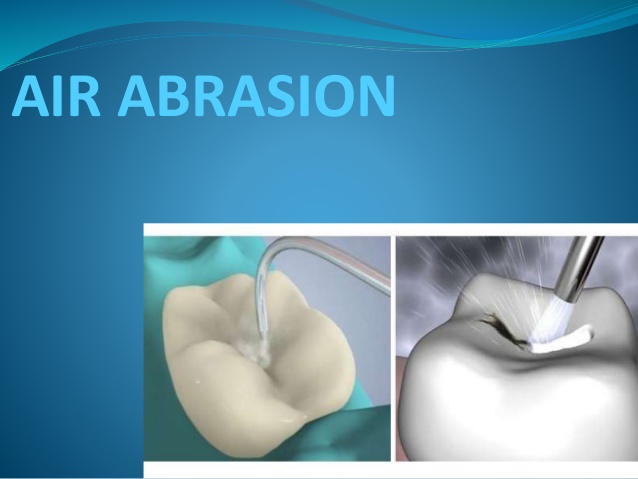When most people think of the dentist, they imagine the sound of the dental drill. That’s because whether preparing a tooth for a dental crown, removing cavities or performing root canal therapy, dentists have relied on this time-tested technology for years. However, modern dentists also have a newer option for removing portions of the tooth structure without that familiar whir: air abrasion.
Patients who feel some level of dental anxiety at the thought of a traditional drill may be pleasantly surprised to discover that air abrasion, an alternative to drills, is available for many dental procedures.
What Is Air Abrasion?
Air abrasion is a method for removing tooth decay with tiny particles of aluminum oxide or silica — imagine a miniature sandblaster gently wearing away the decayed material without the friction of a drill. Your dentist uses compressed air to spray a stream of the sand-like particles at the affected tooth while an assistant suctions away the excess. Because air abrasion, or micro abrasion, is most commonly used to prepare a tooth for a tooth filling, it is also often referred to as kinetic cavity preparation.
During your appointment, your dentist will generally provide safety goggles to protect your eyes from the spray of particles. He or she will also take steps to shield the surrounding teeth, to avoid unintentional wear of healthy tooth surface. A rubber dam may also be placed around the teeth not being treated. However, some dentists opt to use a protective layer of resin to achieve the same effect.
In addition to removing tooth decay, dentists often use air abrasion to prepare a tooth for dental sealants or dental bonding. Old composite resin fillings can often be removed with the technique as well. In some cases, air abrasion can even be used to gently remove stains on the tooth surface.
Pros and Cons
Only your dentist can determine the right method for treating your teeth. If he or she elects to use air abrasion, you may notice that, unlike drills, air abrasion produces no heat or friction during dental treatment. The process also eliminates the drilling sound that many patients find so unnerving, no pun intended.
Air abrasion also requires less of the tooth be removed, which may reduce your discomfort or lessen the need for an anesthesia injection. Best of all, multiple parts of your mouth can often be treated in one appointment, which may mean fewer appointments.
Of course, some dental procedures still require the use of a traditional drill, such as preparing a tooth for a dental crown, removing deep decay or root canal therapy. And because the “sandblasting” effect smoothes the tooth as it removes tooth decay, it can only be used for patients who will receive composite resin fillings. Amalgam fillings require the rough surface created by a drill to adhere properly. Air abrasion may also be more costly than other methods.
Great for Kids
Because air abrasion eliminates the sound, heat and vibrations of dental drills, children and patients with dental anxiety are often great candidates. If you or your child are fearful of an upcoming treatment, ask your dentist whether air abrasion is right for you.

